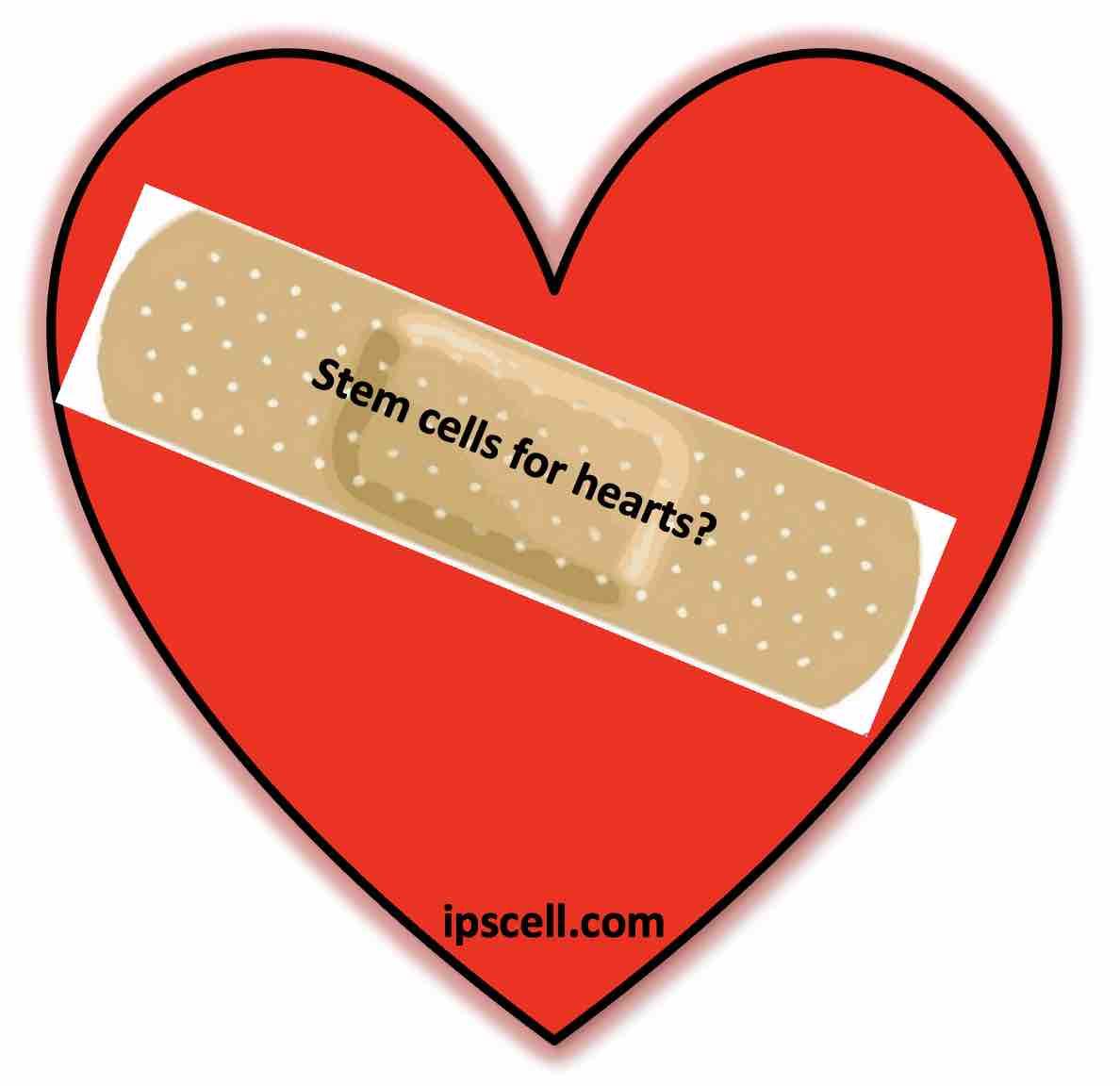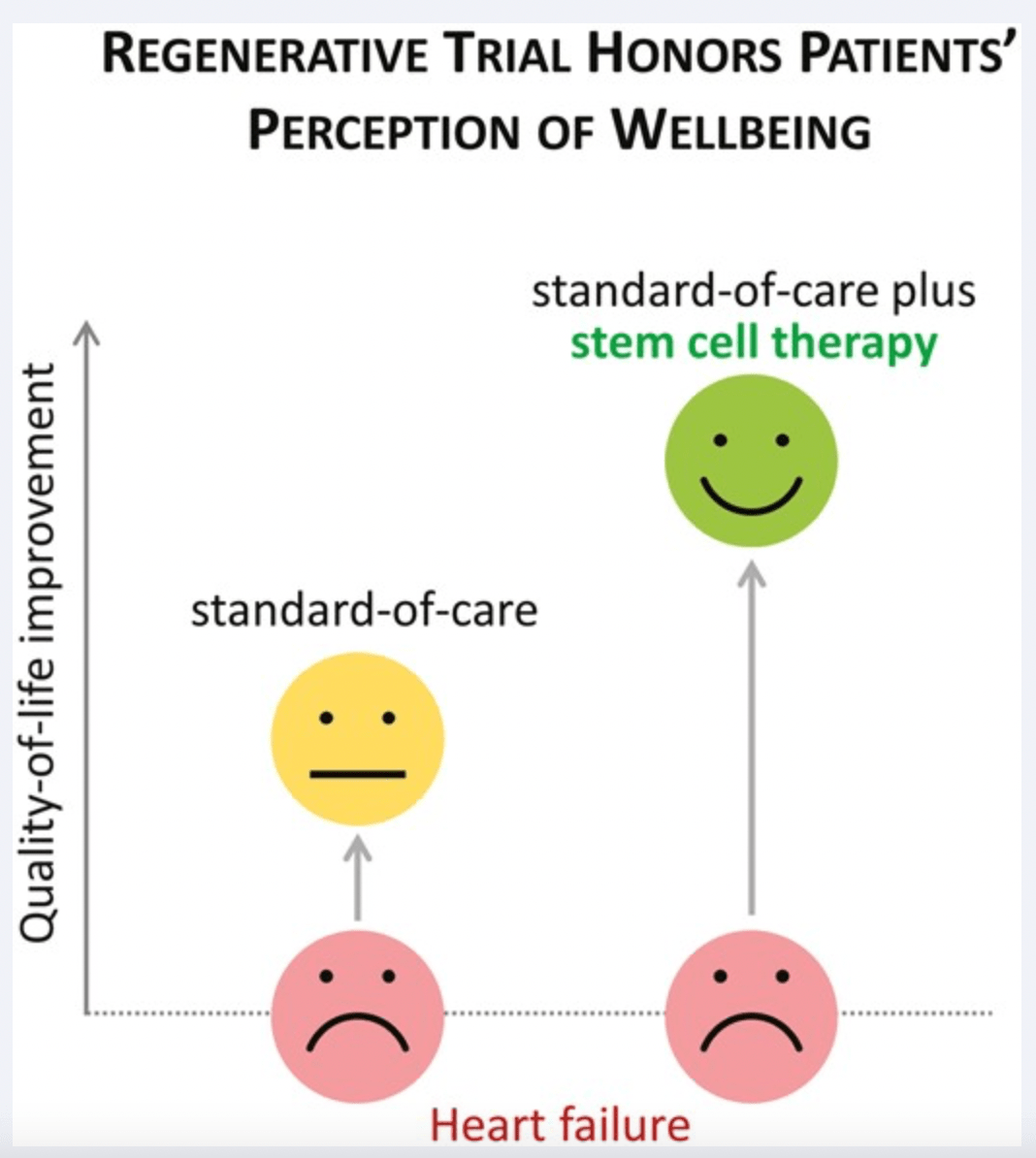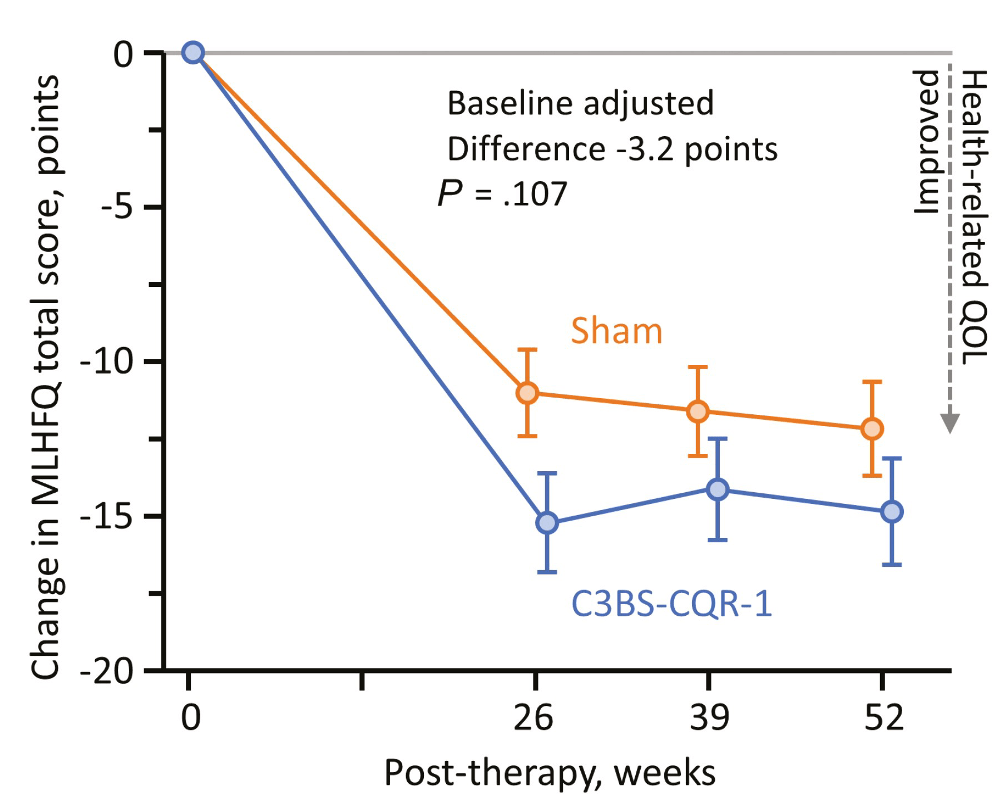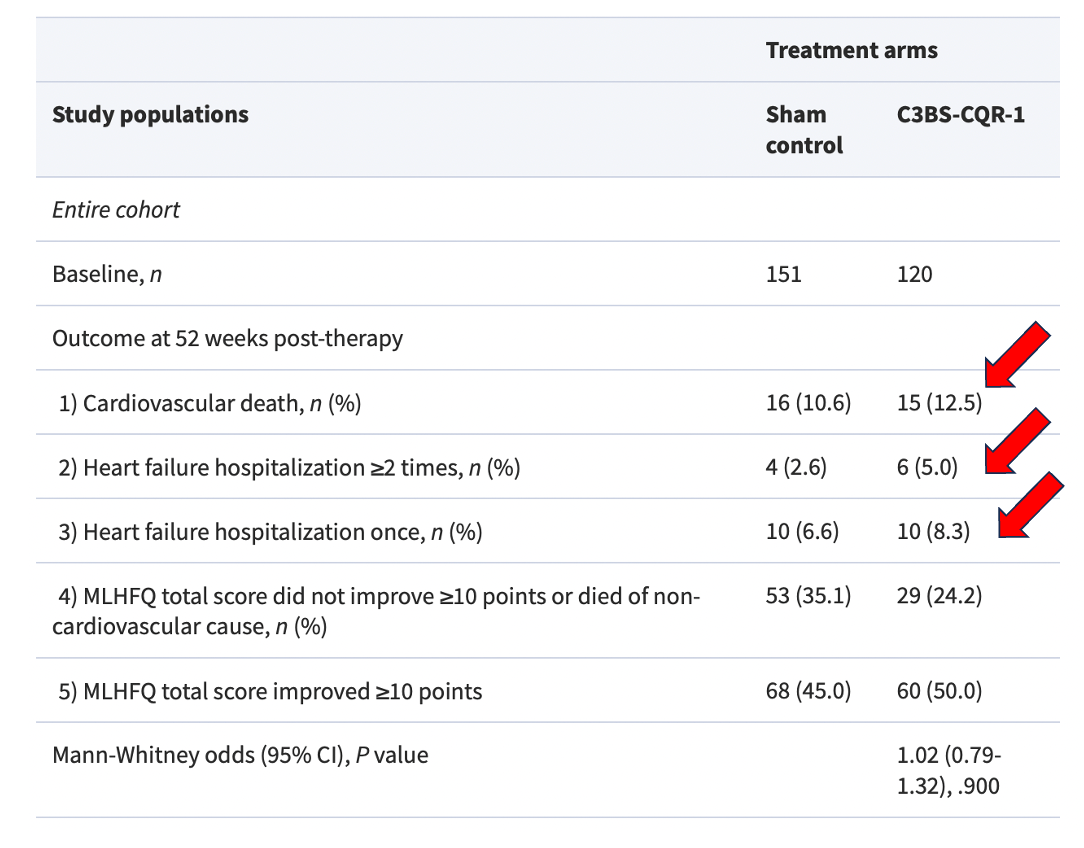One of the first regenerative medicine talks I ever saw was on stem cells for heart disease. I was still a trainee at the time. The professor, whom I won’t name, presented data from an early phase trial reporting that direct injections of some kind of cells right into the heart improved outcomes.
Stem cells for heart disease arena
It sounded exciting but maybe too good to be true, and, in the end, it wasn’t replicated in the years that followed.

Since then, there have been dozens of different cell therapy clinical studies in this cardiovascular area. Mostly these studies report small possible benefits just from post-hoc analysis. However, often the studies are initially hyped in the media anyway.
For broader background on stem cells for heart disease, see this post I did last year: stem cell therapy for heart disease.
There is such a need for novel approaches to various forms of cardiovascular disease. I keep hoping a cellular approach might be rigorously proven to work and be safe. I also keep an eye open for new trials and papers.
A new trial paper from The Mayo Clinic caught my eye in this space. The new paper reports on a Phase III trial with a heavy emphasis on patient perceptions of quality of life. There are some unusual things about this publication.
Graphical abstract from Yamada et al. SCTM paper on stem cells for heart disease. What do you think of using smiley and sad faces in an academic publication?
Phase 3 trial
Here it is: Cell Therapy Improves Quality-of-Life in Heart Failure: Outcomes From a Phase III Clinical Trial, Stem Cells Translational Medicine.
The team delivered autologous marrow-derived mesenchymal cells right into the heart. Why would such cells help the failing heart? To me, it’s not clear there is a strong rationale here. I might have missed it, but I also didn’t find the team’s rationale articulated clearly in the paper.
Admittedly, the fact that the stem cells for heart disease arena has had so many ups and downs was on my mind as I started reading this pub. So I went into it with a somewhat skeptical mindset. The fact that I saw a graphical abstract with smiley/sad-type faces on it likely influenced my perspective too.
The group led by Andre Terzic focused not just on measuring readouts related to the heart itself but also on patient perceptions of their quality of life. Hence the emoji-like overall figure.
This was a randomized, double-blinded study. Controls underwent a sham procedure, which is a big challenge to those running the trial and participants, so kudos to all of them on that.

Overall, unfortunately, there was only a small, non-significant improvement in quality of life with cell therapy as measured by the The Minnesota Living with Heart Failure Questionnaire (MLHFQ).
Note that the cell therapy intervention is called C3BS-CQR-1. This kind of intervention is sometimes referred to as cardiopoiesis.
Glimmer of hope: LV enlargement subgroup may have benefitted
When the team then just looked at a subgroup with severe enlargement of the left ventricle of the heart, the quality of life improvement was reported as significant.
This improvement also went along with reduction in death and hospitalization, which are more traditional measures of trials of heart failure. This is the area of hope from the paper, but is it a real, meaningful signal that others will find too in independent studies?
Is that kind of subgroup analysis reasonable? I’m also not clear on whether this heart enlargement grouping was an original primary or secondary endpoint. So is this also posthoc analysis?
Even in the chamber enlargement group given cells, the improvements were not huge, but they could be meaningful to patient’s quality of life if reproducible.
Adverse events
I was also concerned to see that the group getting stem cells had some modest but potentially meaningful increases in adverse events. See red arrows I added onto the table below. Overall, patients receiving cells had more deaths and hospitalizations than the sham group.
This wasn’t discussed in the article either, which is an issue in my view. The potential increases in adverse events were moderate but then so was the possible improvement in quality of life. Again, the LV enlargement subgroup seemed to do better.

The take-home on this stem cells for heart disease paper
Overall, I’m left with a bit of deja vu from this paper. Another stem cells for heart disease trial paper that doesn’t have strongly positive, clear data. These trials are very difficult and expensive. Looking ahead is it worth focusing on a new trial using these cells just on those with LV enlargement? Or do these data suggest stopping is the most rational decision?
There are more than 350 trial listings on Clincialtrials.gov for stem cells for heart disease. Do all of these trials make sense?
It’s also notable in the big picture that this paper put major emphasis on patient perceptions of quality of life. Should that be a more common measurement in the cell therapy field? How rigorous is it?
Related Posts
- SEO Powered Content & PR Distribution. Get Amplified Today.
- PlatoData.Network Vertical Generative Ai. Empower Yourself. Access Here.
- PlatoAiStream. Web3 Intelligence. Knowledge Amplified. Access Here.
- PlatoESG. Carbon, CleanTech, Energy, Environment, Solar, Waste Management. Access Here.
- PlatoHealth. Biotech and Clinical Trials Intelligence. Access Here.
- Source: https://ipscell.com/2024/01/put-on-a-happy-face-mayo-clinic-stem-cells-for-heart-disease-ph3-pub/
